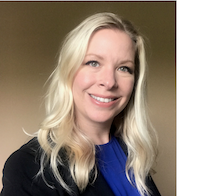This is a longer version of the interview with Katie Beck that appeared in the February 2020 issue of Pro Builder.
Liability insurance underwriting for home builders has historically been an exercise in frustration, instability, and inconsistency both for builders and for the insurance industry. The latter wants hard, timely, and comprehensive data to assess risk, while builders live a life of latent defects, unpredictable warranty service calls, and changing market conditions that affect quality. Bridging that disconnect is what drives Katie Beck, Head of Home Builders at Berkshire Hathaway Specialty Insurance, in Shakopee, Minn., who sat down with Jenny Simon, director of marketing communications at IBACOS, a housing quality consultancy in Pittsburgh, on behalf of Pro Builder, to discuss how builders, brokers, and underwriters can collaborate to achieve more reliable results.

Head of Home Builders
Berkshire Hathaway Specialty Insurance
PRO BUILDER: Why is underwriting home builders so difficult for insurers?
Katie Beck: This has long been a tough business for our industry in terms of losses and program structure because there isn’t a ton of data we can get our hands on, much less get our arms around, to evaluate risk in the way we traditionally evaluate other industries. And the data we do get is old. Losses, particularly those associated with construction defects, take up to 10 years to be reported and even longer to reveal the final cost outcome. With that, the quantitative data that exists is extremely volatile due to the housing boom through the early 2000s, followed by the steep decline in production in the late 2000s and into the 2010s. That makes it difficult for us to truly understand the home builder’s world.
PB: How can builders best present themselves to insurers?
KB: If you’re simply handing over loss runs and closing figures to your broker or underwriter, they’re probably just turning over rates based on general assumptions and broad data. To get them to do more for you, work with them to understand your “story”—the culture of your company, your internal processes, and your demonstrated commitment to quality. Builders also need to understand that the presentation they prepare for an insurer should vary from what they prepare for an investor. What sounds exciting to an investor—new products, a new target buyer, and new designs—may scare or concern an underwriter.
PB: How do you best leverage builder data?
KB: Builders and insurers need to shift their focus to look at what the data and the numbers actually mean. Underwriters should overlay statistics with qualitative information, such as trends within the builder’s warranty data, whether concerns are being addressed, and how the customer experience has changed over time. Changes to construction products or practices are also important, as are shifts in a builder’s corporate culture or market, and whether they have invested in systems that improve their quality and processes. All of that has an impact on risk assessment.
PB: If I’m a builder with some significant losses, how should I handle that with my broker or underwriter?
KB: Builders shouldn’t be scared of their losses. Instead, they need to use them as an opportunity to showcase what they learned from those experiences and how their company and processes changed and improved because of them.
Every large loss should have a lesson learned. The dichotomy of this is that an account could have no losses, but that doesn’t mean they are good; it could just mean they’re lucky. Alternatively, some of the best builders in the industry have had some very hairy losses, but they’ve learned from them and have become even better.
Home building is interesting and different from other industries because, for a production home builder, the issues that caused a loss are often repeated multiple times across multiple homes and/or communities. While this makes the losses potentially large, it also provides the opportunity to make the necessary changes that will improve processes, procedures, and overall building quality. In this way, home builders are able to really dive into losses and learn from them.
On the flip side, an important—but often overlooked—nugget of qualitative insight can be garnered from examining how a builder handles the smaller issues. Are they “on it”? How attuned are they to delivering a quality home? For example, are they looking at customer satisfaction feedback and responding to it? Are they reviewing their warranty spends and responding? Did they learn from their mistakes—regardless of how significant—and make changes to their business or construction plans or products? What have been the results of those changes?
PB: What’s needed to bring more stability and consistency to home builder insurance underwriting?
KB: The more insurers there are that understand the home building industry, the more stable insurance for the space will become. Often many carriers jump in and offer broad coverage without truly understanding it, only to subsequently drop the line of coverage, which creates a culture and reputation of instability in our industry for this space. But those that understand it and dig into a builder’s story far beyond the numbers can provide stable, consistent coverage, especially for builders that really care about quality. I am committed to helping builders bridge that gap.
PB: You seem to be very passionate about providing insurance in this space. Why?
KB: Providing insurance in this space is both challenging and exciting. We have a paradigm to change: The industry is building better homes than it did 15 years ago. In terms of insurance, what's needed is stability, and the key to providing stability is working to truly understand the builder’s world.
It’s energizing to be in a position to affect change for both builders and insurers, to give the builder the tools to challenge their brokers and underwriters to look at them differently. Brokers should be digging into a builder’s story far beyond the numbers.
The more insurers there are that understand the home building industry, the more stable insurance for the space will become.
PB: What are some specific changes in building practices during the last decade or so that affect quality?
KB: There is a lot that exists in the builder’s world that didn’t exist or was very different 15 years ago. For example, there are increased building and energy codes that require more robust building practices; there are more systems-oriented products and manufacturers that offer multiple products in one line that go together seamlessly to ensure compatibility and provide systems-level warranty; there is an increased number of voluntary performance programs that require third-party testing to validate a home’s performance; and we see more standardization in construction practices within companies. In short, the world they are building in is very different—in good ways, and in some difficult ways.
PB: What about changes due to the economic shifts through the 2000s?
KB: No doubt, the 2000s was a time of intense change in the industry. The early 2000s was a very active time in the market. With a high demand for homes, builders were busy and were hiring anyone and everyone—regardless of one’s level of experience or expertise in home building. This paved the way for future problems. At the same time, with an influx of cash, it was easy for builders to simply “fix” problems that arose, without having to report it.
Subsequently, the massive slowdown in the industry in the late 2000s resulted in a dramatic reduction in workforce, and builders only retained their top, most knowledgeable talent. With this talent, builders—in general—built better homes in the late 2000s. Yet, with little cash on hand, virtually all claims were handed over to the insurers.
PB: What are you seeing in the market today that can help builders continue to improve the building process and help brokers/underwriters understand their processes?
KB: In general, Self-Insured Retentions [SIRs] have increased, which results in builders taking on more financial responsibility for construction issues.
At the same time, there is an opportunity for builders to utilize tools that foster coordination and alignment across all levels of a builder’s organization, including more options for tracking data and processes.
These types of tools provide a consistent level of data collection reporting that was simply not available 15 years ago. With these tools, builders can verify quality and quality issues, which provides a line of sight that allows the builder to make timely changes to plans, source new products, change processes, and take other actions that help prevent future issues.
A look at the whole quality picture—even small issues—can provide significant insights. If a correlation can be found among a number of small issues early, and action is taken, change can be implemented earlier, and systemic failures that often ensue from the persistence of “small” problems can be avoided.












